Join our Larry McDonald on CNBC’s Trading Nation this Wednesday at 2:30pm ET
Pick Up our Election 2016 Trading and Investing Themes Here:
Don’t miss our next trade idea. Get on the Bear Traps Report Today, click here
Don’t miss our next trade idea. Get on the Bear Traps Report Today, click here
Donald Trump and Market Volatility
Trump’s Surge in the Polls, Comes with Stock Market Volatility
We’d like to personally thank the thousands of journalists who were instrumental in helping markets mis-price risk.
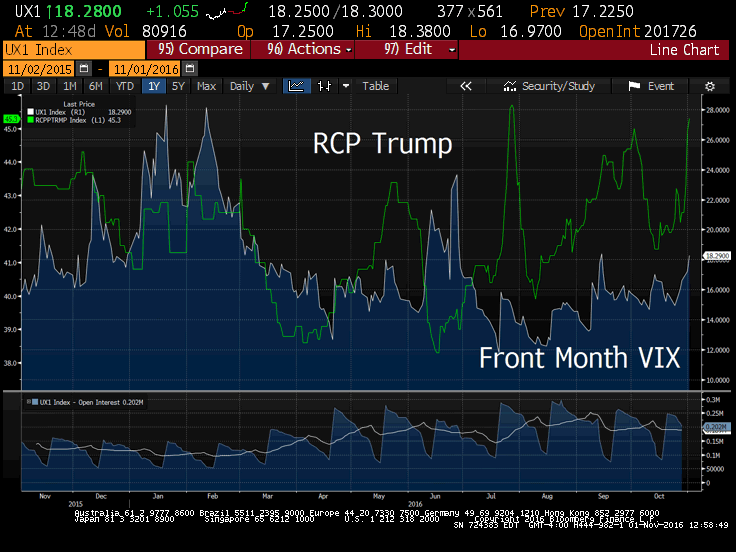
RCP = Real Clear Politics average of over 15 national polls
VIX = The Chicago Board Options Exchange Volatility Index reflects a stock market estimate of future volatility
As you can see above, stock market volatility is directly tied to Donald Trump’s election fortunes. As “The Donald” has surged in the polls, so has volatility in the markets. Over 1000 journalists globally have conditioned investors that this election is over, equity markets are NOT prepared for a Trump Presidency.
“Here’s what market pros are watching. Activity in the VIX futures market and the Mexican Peso speak to a market volatility spike in the near term for U.S. equities. In the below chart, the spread between the 2 month VIX future and the 8 month is converging, just as it did Pre-Brexit. This is a classic vol spike early indicator. Get long and stay long volatility over the next two weeks.”
Quote from Bear Traps Report, October 31, 2016
Flattening VIX Curve, A Market Crash Omen
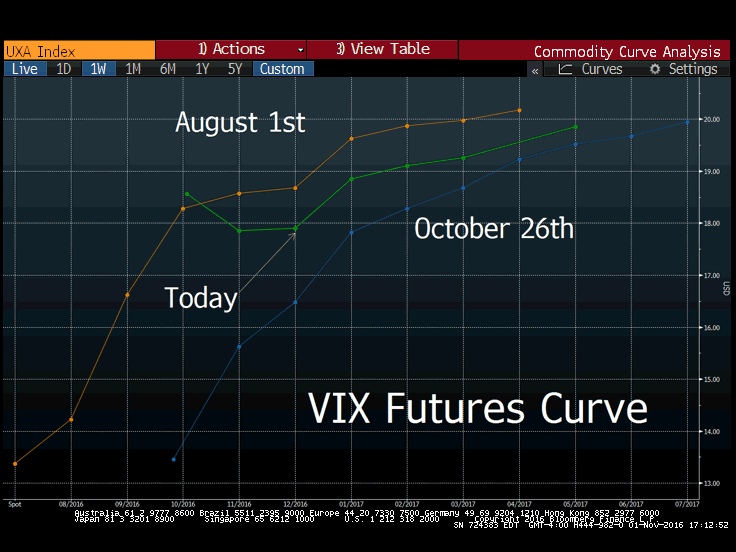 In this chart we see how much flatter (green line above) the VIX curve is today than it was last week (blue line) and even in August (orange line). Elephants leave footprints, capital is piling in on purchasing near term insurance on the stock market, the green line says it all.
In this chart we see how much flatter (green line above) the VIX curve is today than it was last week (blue line) and even in August (orange line). Elephants leave footprints, capital is piling in on purchasing near term insurance on the stock market, the green line says it all.
This summer, the market was complacent and ignored coming risks. Longer dated VIX contracts traded much higher than those in the short term. This gives you a very steep VIX futures curve as we saw last week. The market was not paying up for near term volatility as it was heavily discounting risks such as the U.S. election. The curve began to flatten yesterday, which gave us a proprietary risk signal that further volatility and weaker equities would be coming next. Today we got it, as the short term VIX contract heavily outperformed the longer dated contract. This was a market sell signal we shared with clients this morning. Institutional investors were buying near term protection in the face of uncertainties such as Trump, Italian credit risk and a lower oil price, events we expect to continue.
Pick Up our Election 2016 Trading and Investing Themes Here:
Don’t miss our next trade idea. Get on the Bear Traps Report Today, click here
As we advised clients yesterday, a sharp flattening of this curve leads to risk reduction across asset classes. Today, we saw that play out with equities and credits selling off.
Elephants Leave Footprints, Look for the Clues
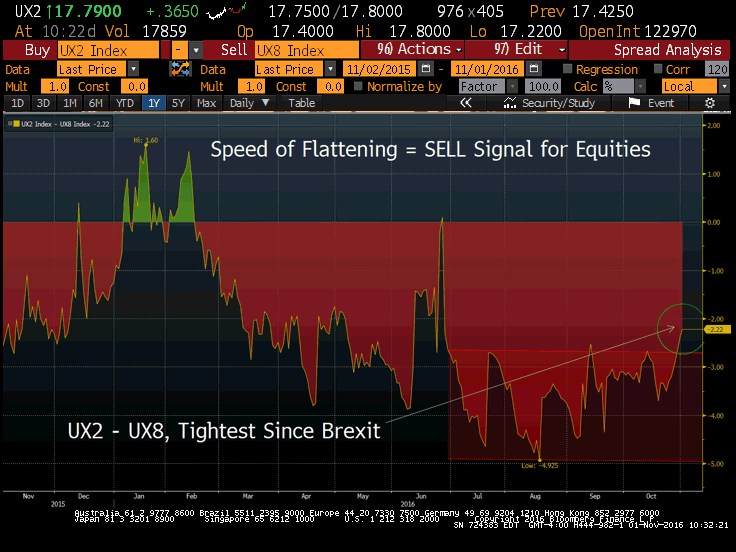
Here, we see the convergence in the 2 month VIX future and the 8 month VIX future. Money is piling in on the 2 month, meaning people are paying up for short term insurance on the market. The 2 month VIX future is getting bid up, becoming more expensive. This shows the markets more near term fears.
Pick Up our Election 2016 Trading and Investing Themes Here:
Don’t miss our next trade idea. Get on the Bear Traps Report Today, click hereHere’s our appearance on CNBC today

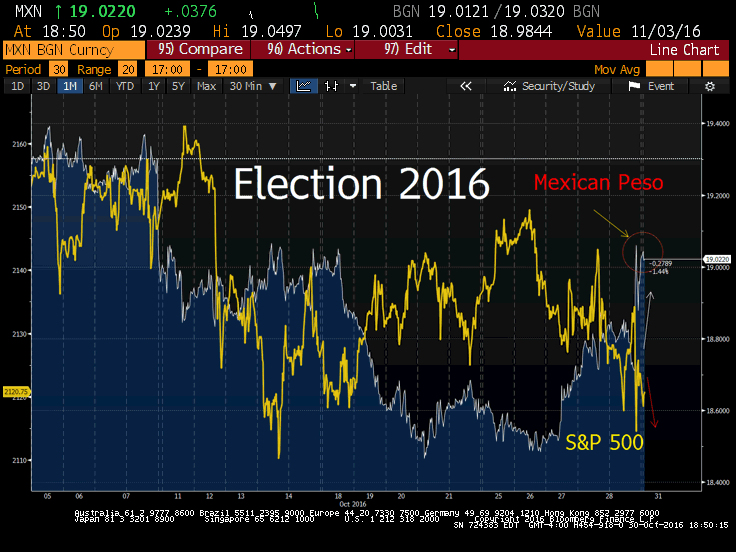 Since October 25th, ES1 (S&P 500 E-mini Futures Contract) is off 1.7% as the Mexican Peso has weakened. CFTC data show, net-short positions on peso recorded before latest FBI revelations, fell 18% in week to Oct. 25. They reached the lowest since May, but that’s changing fast, shorts are piling in.
Since October 25th, ES1 (S&P 500 E-mini Futures Contract) is off 1.7% as the Mexican Peso has weakened. CFTC data show, net-short positions on peso recorded before latest FBI revelations, fell 18% in week to Oct. 25. They reached the lowest since May, but that’s changing fast, shorts are piling in.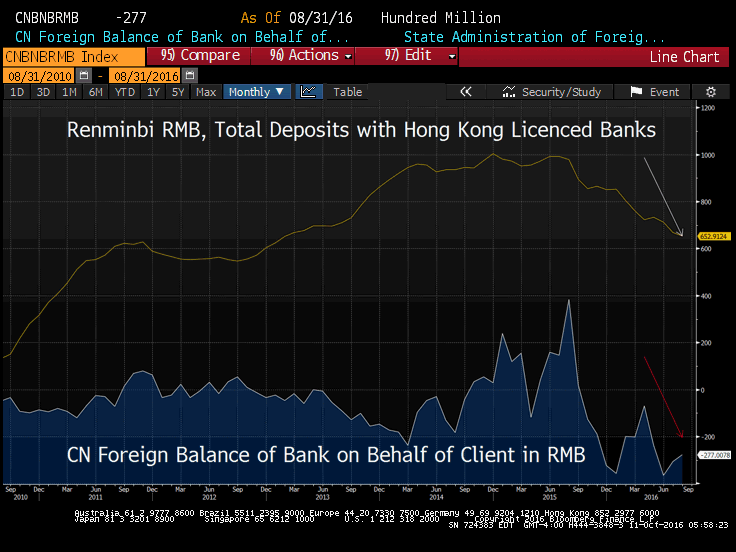 The most dangerous men on earth might just be those 13 central planners in a room in Beijing. They can cook the books all they want but elephants leave footprints. Money is still pouring out of China. A surging amount of capital is exiting the country in yuan rather than in dollars.
The most dangerous men on earth might just be those 13 central planners in a room in Beijing. They can cook the books all they want but elephants leave footprints. Money is still pouring out of China. A surging amount of capital is exiting the country in yuan rather than in dollars.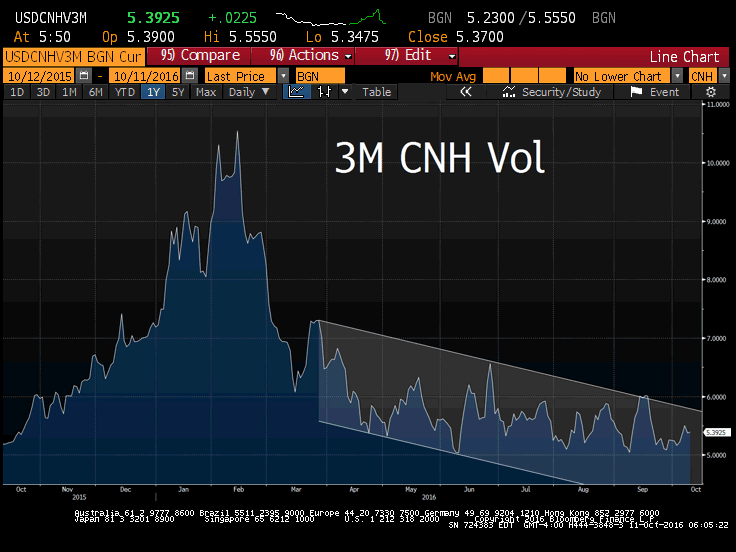
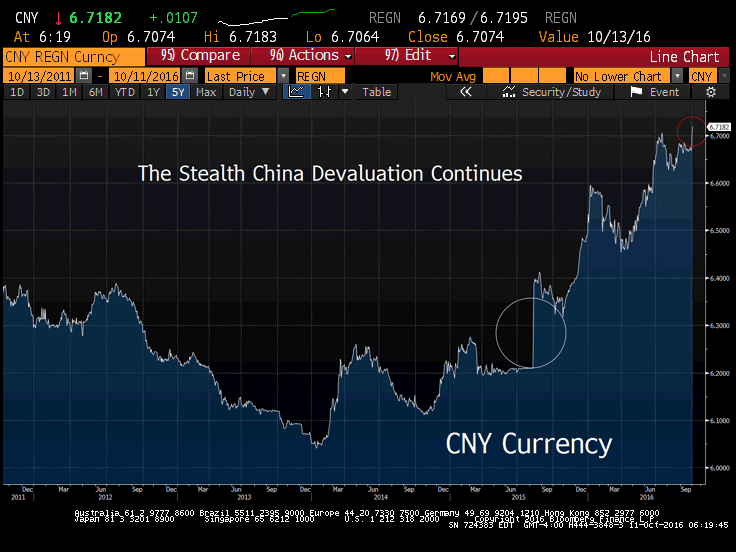
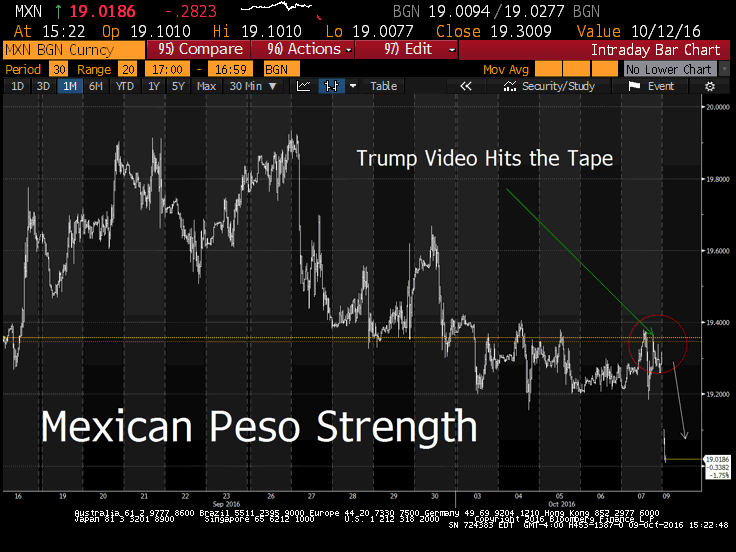 The peso jumped 1.5 percent to 19.013 per U.S. dollar within in an hour of markets opening in Asia on Monday.
The peso jumped 1.5 percent to 19.013 per U.S. dollar within in an hour of markets opening in Asia on Monday.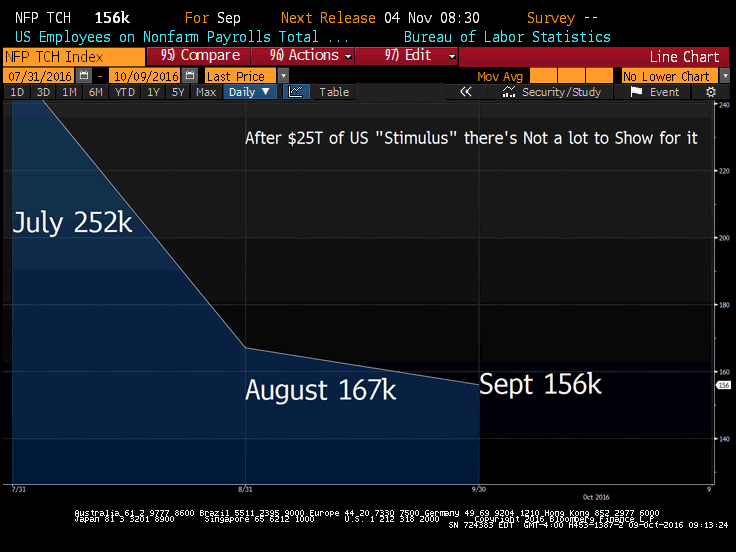
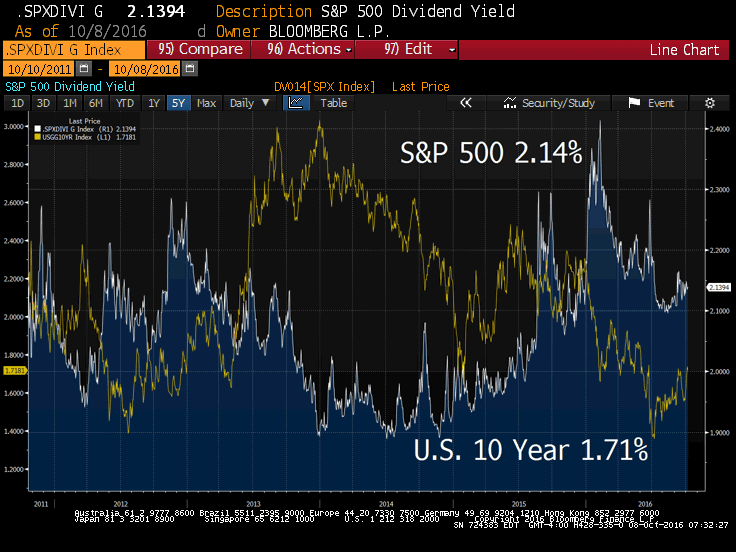
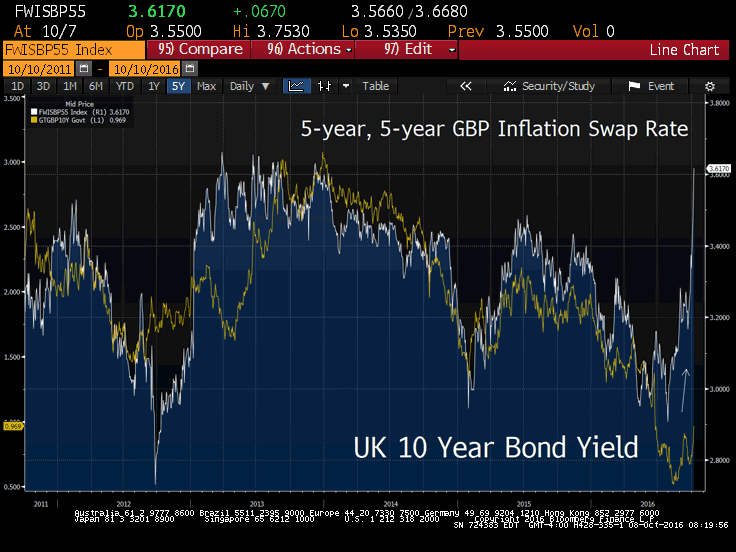 The Bank of England has no room to raise interest rates to protect the plunging Pound and deal with pending inflation. As you can see above, 5yr forward inflation swaps exploded to the upside this week. The market is pricing in a coming inflation surge. The UK economy is far too pound sensitive in inflation terms. Many investors don’t realize the significant amount of floating rate mortgages with teasers in the UK. The country would experience a housing crisis if rates rise too quickly.
The Bank of England has no room to raise interest rates to protect the plunging Pound and deal with pending inflation. As you can see above, 5yr forward inflation swaps exploded to the upside this week. The market is pricing in a coming inflation surge. The UK economy is far too pound sensitive in inflation terms. Many investors don’t realize the significant amount of floating rate mortgages with teasers in the UK. The country would experience a housing crisis if rates rise too quickly. 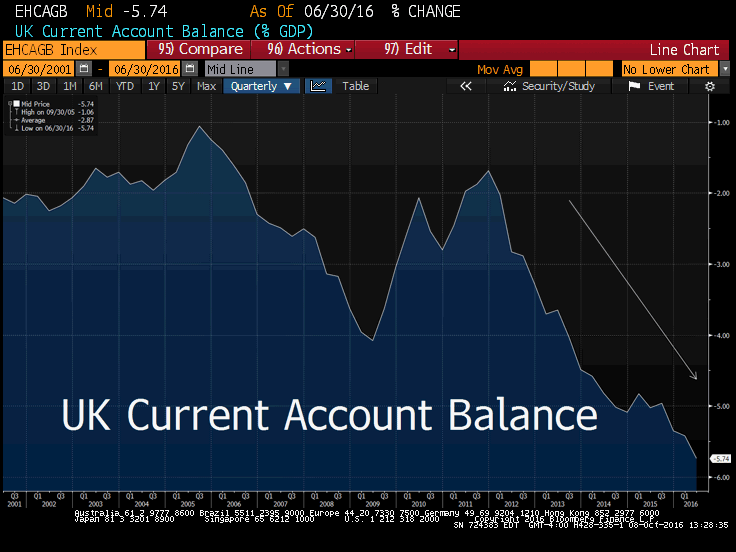 The UK’s colossal current account deficit has the Bank of England fighting with one hand tied behind its back. After decades of making mathematically unsustainable promises to labor unions (trying to buy votes), the UK is at its breaking point for its currency.
The UK’s colossal current account deficit has the Bank of England fighting with one hand tied behind its back. After decades of making mathematically unsustainable promises to labor unions (trying to buy votes), the UK is at its breaking point for its currency.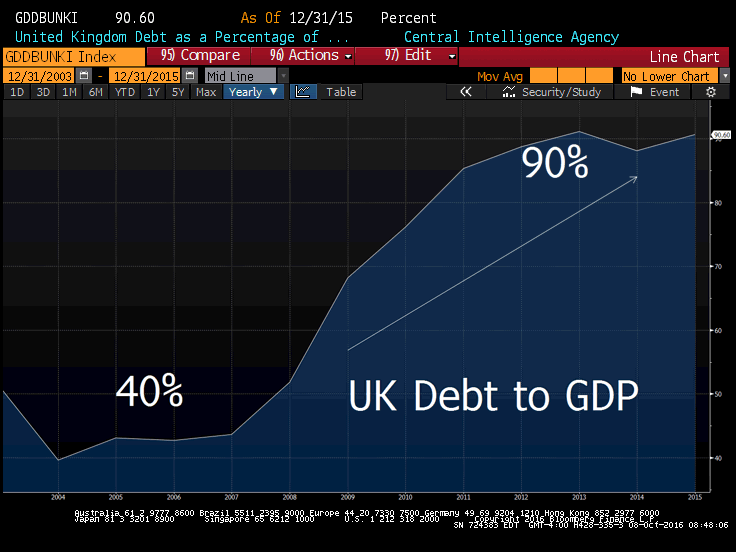
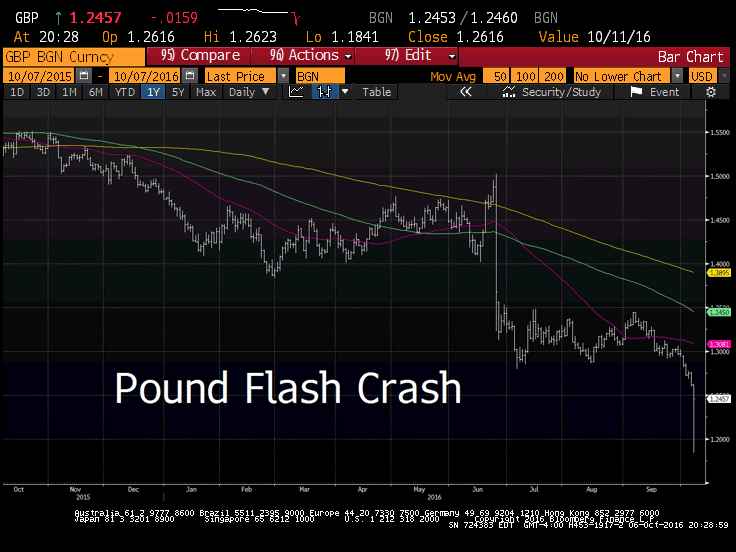
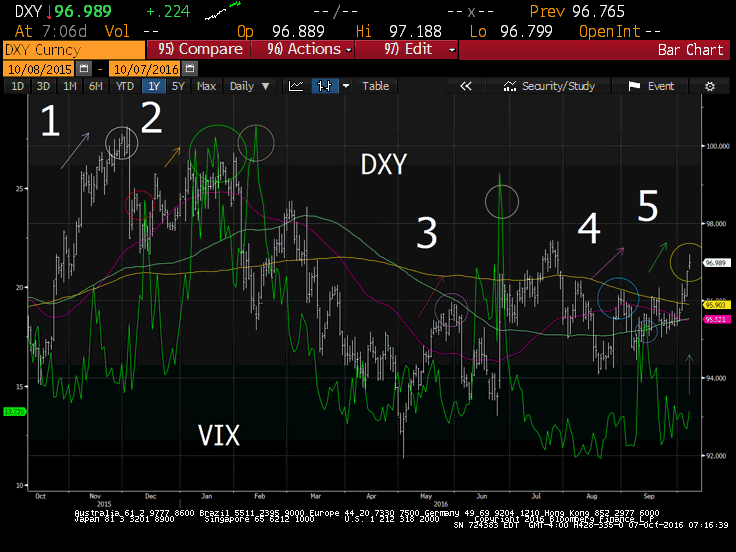 As you can see here, every major spike in equity market volatility over the last year was led by a surge in the U.S. dollar. Economists have been blind to credit risk (thanks to the easy money gravy train since 2008, there’s over $10T globally) tied to the dollar. In a consumed state, economist have been focused on lagging indicators like U.S. economic data. Credit risk vetoed the Fed’s policy path in 2016, economist never saw it coming. They were too busy lecturing us on U.S. jobless claims and the coming 4 rate hike of 2016. One sorry and confused bunch.
As you can see here, every major spike in equity market volatility over the last year was led by a surge in the U.S. dollar. Economists have been blind to credit risk (thanks to the easy money gravy train since 2008, there’s over $10T globally) tied to the dollar. In a consumed state, economist have been focused on lagging indicators like U.S. economic data. Credit risk vetoed the Fed’s policy path in 2016, economist never saw it coming. They were too busy lecturing us on U.S. jobless claims and the coming 4 rate hike of 2016. One sorry and confused bunch.
